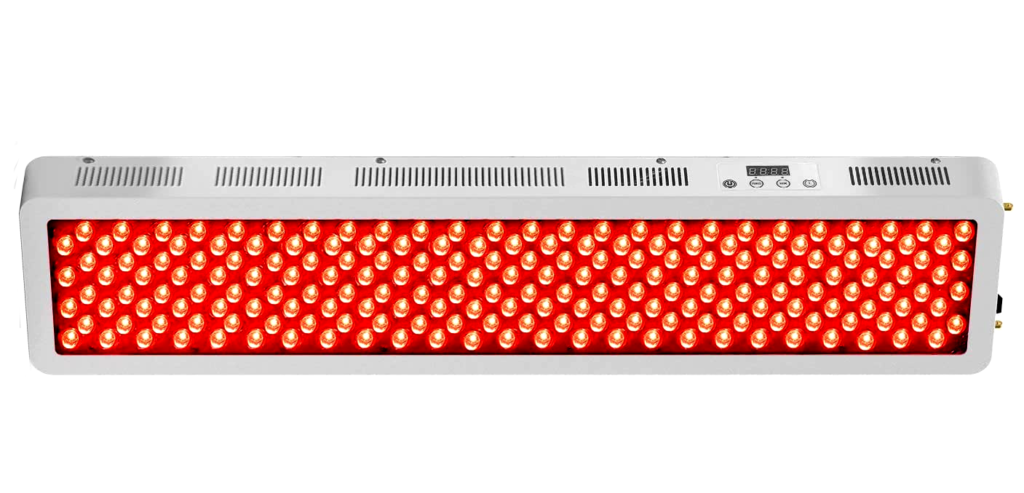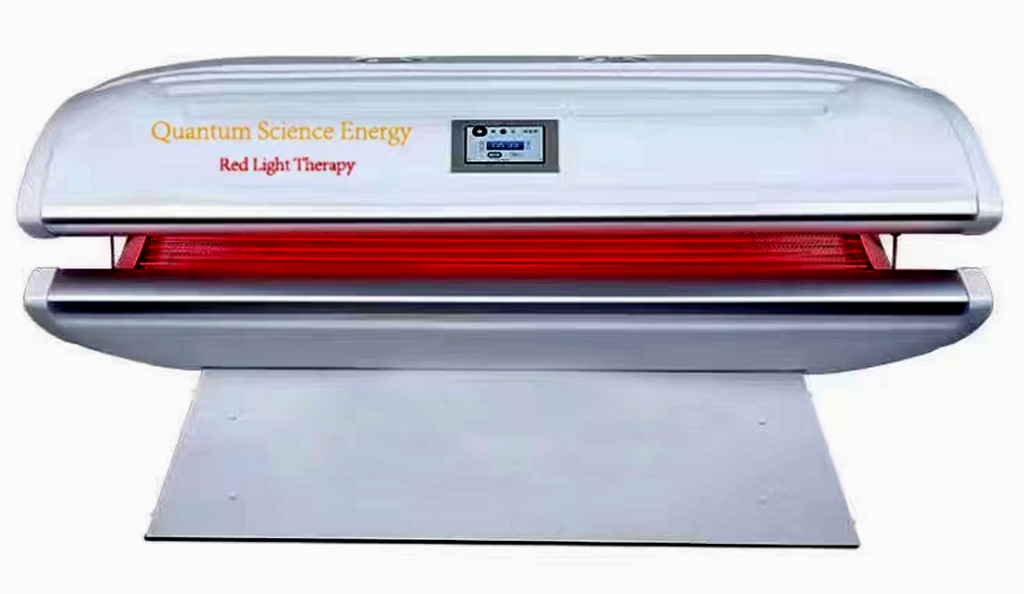Red light therapy (RLT) has come to the forefront for its potential in treating various skin problems like wrinkles, redness, acne, and scars. Although more research is needed to determine its true effectiveness, if you are curious to try this option for addressing signs of aging, it’s always best to discuss it with your healthcare provider first.
Red light therapy: what is it?
Using low-wavelength red light, red light therapy (RLT) can reportedly reduce wrinkles, scars, redness, and acne, among other conditions.
There is currently a lot of research on the potential effectiveness of red light therapy across a wide range of health applications, as well as the publication of smaller-scale studies and extensive online discussion. The overall efficacy of red light therapy remains to be fully established, even though some studies have shown promising results.
Red light therapy is also known as:
-
- Laser light therapy at low levels.
- Laser therapy with low power.
- LED light that is non-thermal.
- Therapy with soft lasers.
- Therapy with cold lasers.
- Photonic stimulation, biostimulation.
- The use of photobiomodulation and phototherapy.
What led to the interest in red light therapy?
Initially, red light therapy was explored by NASA as a means to promote plant growth in space and facilitate wound healing in astronauts. Over time, the research expanded, leading to investigations into other potential applications of this therapy.
Red light therapy has gained significant acceptance in the medical field, particularly in the application of photodynamic therapy. This treatment method involves the use of low-power red laser light to activate a photosensitizer drug, leading to a chemical reaction that effectively eliminates cells. Photodynamic therapy utilizing red light is commonly employed for treating a range of skin conditions such as skin cancer, psoriasis, acne, warts, and various other types of cancer.
Currently, RLT treatments are being investigated (or used) for a wide range of health conditions. However, the effectiveness of the treatment for these purposes is unclear.
What is the supposed mechanism of action of red light therapy?
Red light therapy is believed to operate by targeting the mitochondria, often referred to as the “power plants” of cells within the body. By providing an increase in energy, cells are able to perform their functions more effectively, including skin repair, promoting the growth of new cells, and enhancing skin rejuvenation. In particular, specific cells have the ability to absorb light wavelengths, which then stimulate their activity.
Skin health may benefit from red light therapy in the following ways:
-
- Boost collagen production, which gives skin its structure, strength, and elasticity.
- Skin is made up of connective tissue made up of collagen, which is produced by fibroblasts.
- Circulate blood to the tissues.
- Cellular inflammation can be reduced.
- What skin conditions are being treated with red light therapy?
- Some common skin conditions can be treated with red light therapy, including:
- Heal wounds more quickly.
- Stretch marks can be reduced
- Wrinkles, fine lines, and age spots can be reduced.
- Enhance the texture of the face.
- Psoriasis, rosacea, and eczema can be improved.
- Scars can be improved.
- Skin that has been damaged by the sun can be improved
- Increase hair growth in people with androgenic alopecia.
- Get rid of acne.
Does red light therapy work?
Researchers are still unclear about the effectiveness of RLT for all its claimed applications. Some studies have shown some potential for certain conditions, but more studies are needed. Red light therapy is still an emerging treatment that is generating increasing interest. However, most of its uses are not supported by enough evidence at this time.
Randomized, placebo-controlled trials are the standard for determining a product’s efficacy. In these studies, participants with similar traits (age, weight, race, gender) are subjected to either an experimental treatment or a placebo (fake treatment). Occasionally a comparison to a widespread treatment is included for further analysis. The outcomes of the study can then be compared between those who received the emerging therapy and those who did not receive any (the placebo group) or against an already existing procedure.
Several of the studies published on red light therapy (RLT) involved a limited sample size, lacked a placebo group, were conducted on animals instead of humans, or focused solely on cell tissue. While many researchers acknowledge the promising nature of the results obtained thus far, they emphasize the necessity for high-quality studies involving larger participant cohorts. Further research of this kind is required to establish the effectiveness of RLT more conclusively.
How safe is red light therapy?
If used as directed and short-term, red light therapy does not appear to cause any side effects. RLT does not use ultraviolet (UV) light, like the sun or tanning booths, which can cause cancer. This type of light is not toxic, not invasive, and not as harsh as some topical skin treatments.
It is important to note that misusing red light therapy products, such as using them excessively or not following the provided instructions, can potentially result in skin damage or harm to the eyes if proper protection is not used. The long-term safety implications of devices utilizing red light therapy have not been fully determined at this time.
To ensure your safety, it is recommended to consult with a dermatologist or a qualified and trained cosmetic therapist. Seeking the expertise of a dermatologist will allow for an accurate diagnosis of your skin condition and provide an opportunity to discuss the potential benefits of red light therapy along with other available treatment options.
What are the risks and benefits of purchasing devices for at-home use?
When searching online, you will come across numerous red light therapy products. While these products are generally considered safe for use, it’s important to note that they might utilize lower wavelength frequencies, making them less powerful compared to the devices used by dermatologists or trained skin professionals. As a result, the outcomes you anticipate may not be achieved to the extent you desire.
If you decide to purchase a red light therapy device, it is crucial to prioritize eye protection by using appropriate shielding. Additionally, it is important to carefully adhere to all provided instructions and maintain proper care of the device to ensure its optimal performance and longevity.
In addition to utilizing red light therapy (RLT) in medical offices and through personal devices at home, you may come across advertisements for RLT at spas, salons, saunas, tanning salons, gyms, and wellness centers. It is vital to exercise caution and carefully consider the credibility and reliability of the supplier and the establishment where you plan to receive the treatment. It is highly recommended to seek advice from a medical professional to obtain proper guidance on the most appropriate treatment options for addressing your specific skin condition or concern.
Red light therapy is also being promoted for what other medical conditions?
Among the other potential medical uses being investigated are:
-
- Reduce the side effects of cancer chemotherapy, including oral mucositis.
- Red light therapy has shown potential in providing relief from pain and reducing inflammation associated with conditions such as rheumatoid arthritis, ankle tendonitis, osteoarthritis of the knee, and carpal tunnel syndrome.
- Preventing cold sores caused by the herpes simplex virus.
Numerous other applications of red light therapy are being promoted online. However, it is important to note that there is currently no scientific evidence to support the use of red light therapy for purposes such as
-
- weight loss
- cancer treatment
- cellulite removal, or
- addressing mental health concerns like
- depression and
- seasonal affective disorder (SAD)
Is there anything else I need to know about red light therapy?
When considering red light therapy, there are many factors to consider:
Red light therapy (RLT) is generally not covered by health insurance as it is not commonly recognized as a reimbursable treatment. To clarify the coverage specifics, it is advisable to reach out to your health insurance provider and inquire about the inclusion of RLT in your policy before considering it as a treatment option.
The number of treatments required for red light therapy (RLT) varies depending on the specific skin condition. In most cases, ongoing and regular treatments are necessary rather than a one-time procedure. Typically, patients may need to undergo RLT sessions one to three times a week for several weeks or even months. It’s important to note that some individuals might also require additional touch-up treatments to maintain the desired results. It’s essential to consider the potential time commitment and associated out-of-pocket costs when opting for RLT as a treatment option.
The attainment of desired results in red light therapy (RLT) can vary due to individual differences in skin characteristics. Additionally, the wavelength of the red light source utilized plays a significant role in determining the depth of skin penetration. It is important to note that the wavelength of the red light device used in a medical professional’s office may differ from that of an at-home device, which can potentially impact the outcome you desire.
It is essential to consider the expertise and experience of the person providing red light therapy (RLT). When deciding on a suitable location to receive this treatment, one should carefully evaluate whether a tanning salon is the ideal setting or if it would be more prudent to consult with a medical professional first. Seeking guidance and treatment from a medical professional can often provide a higher level of confidence and ensure the best possible care for your specific needs.
To determine the appropriateness of red light therapy (RLT) for your specific condition currently plaguing your skin, it is advisable to consult with your medical provider. They will be able to confirm a diagnosis and provide insights into suitable treatment options. It is important to consider that there may be other scientifically validated approaches that could be more suitable for addressing the condition currently presenting a challenge for you. By seeking guidance from your medical provider, you can ensure that you receive an accurate diagnosis and explore the most appropriate treatment options available to you.
Red light therapy is increasingly being considered as an option for addressing some skin conditions. If you’re interested, it’s best to talk to your healthcare provider or dermatologist for an examination and diagnosis. The two of you can then collaborate on potential treatments that will get you the results you want. Don’t be afraid to ask about red light therapy – if it’s suitable for your condition and if it’s safe and successful.


